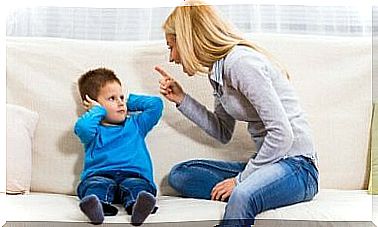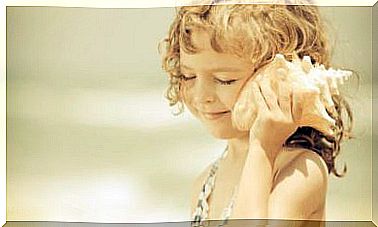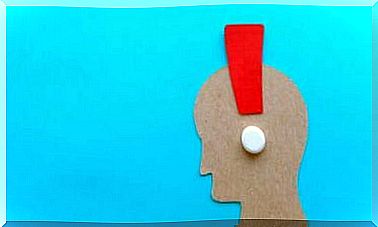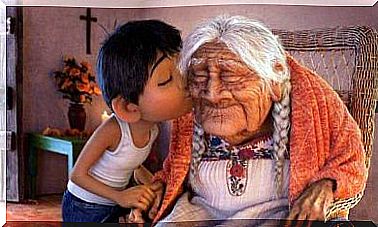Childhood Depression: A Child’s Tears Are Bullets Straight To The Heart
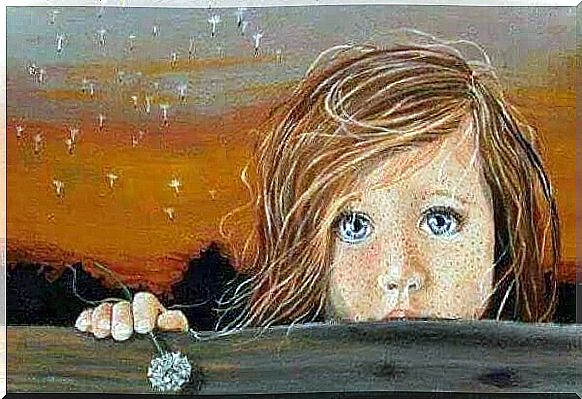
Childhood depression exists, although it is very poorly known. This is evidenced by sad children who cry, who are constantly angry, and who do not enjoy life. Children who live their lives drowning in anxiety. They are children who see their innocence hidden in the shocking monster of depression.
After all, there are indeed children who find themselves in deep grief. Children who can’t smile because their reality has been responsible for stopping their innocence. It doesn’t seem real. Because the image we have of childhood is the image of children who are smiling, happy and playful.
When we see a child who is serious and down, we try to tell him that he should not be sad. We tell him not to cry, smile. That is the first serious mistake.
A depressed child maintains an internal dialogue that he or she rarely makes precise and visible. Some of the questions he asks himself are: How can I force myself to feel better? Why do people demand that I smile, play, and not cry and never get angry? I can’t stop feeling irritated, why? Why is everyone looking at me strangely? Maybe I’m weird and it’s not even worth it.

Childhood depression: depression with visible features
Childhood depression is real and has clear signs that can help get our alarm bells ringing to indicate that something is not going well now in our child’s inner spiritual life. Some of the symptoms are very similar to those in adults. For example, sadness manifests itself repeatedly, just like a decline in school success. This can be compared to the low performance in working life seen in depressed adults.
However, a typical aspect is that irritability and aggression are common features in childhood depression. Many times you will also find somatic complaints such as stomach aches, headaches, muscle aches, etc.
We can also see how darkness overshadows their motivation and their desire to play or do other activities. You may also see that your child is not eating or sleeping properly or is lacking energy at all.
A young person suffering from childhood depression is unlikely to be able to concentrate, think, or make decisions. In fact, he might think of death or even think, plan, or attempt suicide.
If you notice five or more of these symptoms mentioned, a professional is likely to make a diagnosis of childhood depression. However, you should keep in mind that certain degrees of apathy, reluctance, and sadness are perfectly normal.
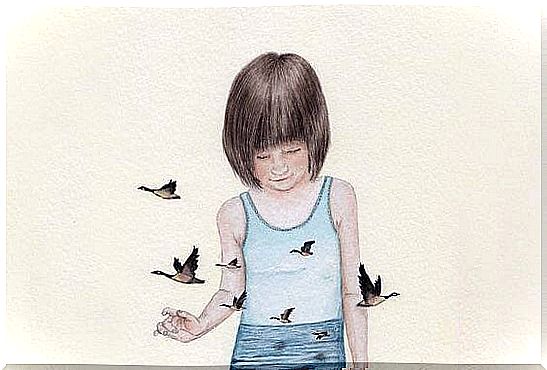
In fact, we should respect the child’s sadness and apathy with caution. We often demand too much by telling them that they should try to be happy without understanding what is causing their discomfort. Moinen means that we communicate that sadness, frustration, and anger are not normal; that they are useless emotions.
Let’s think about what this means for a child or an adult. Isn’t grief about losing normal? Don’t all of us feel irritable at some point? Aren’t these emotional states useful for internalizing certain things?
It is also possible that we may observe a certain amount of motor restlessness in depressed children, suggesting restless depression . A child cannot sit still in his seat, just as if a chair were burning his skin. He twists his hands, steps back and forth, drums his fingers…

They seem to run on batteries that are always full. This condition should not be confused with hyperactivity. Thus, it is always essential that professionals pay attention to any other symptoms that may wing this in order to make a correct diagnosis.
The opposite of restless depression can be seen in slow depression. This little one thinks, speaks and moves at a slow pace. You can’t talk to him and you have to constantly repeat your question to him. His topics are not diverse and he stays quiet and in place for very long periods of time.
Another clue may be that the child has a very low or weak self-esteem or self-esteem. The child may think he or she is worthless and wrong by nature. He might even exaggerate the mistakes he makes.
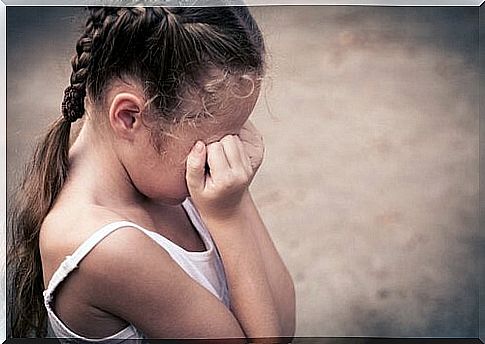
10 ideas on how to help a depressed child feel better
Francisco Xavier Mendez is a Spanish childhood psychologist who, in his book “The Child That Doesn’t Smile,” offers ten ideas for promoting smile and joy in the life of a child suffering from constant sadness.
- Teach by example: smile, use good humor, enjoy your free time and vacation, think aloud in a sensible way, etc.
- Help your child have fun and feel good: plan pleasant and fun activities, invite his friends to your home, surprise him with imaginative and attractive plans, highlight his achievements, keep in mind his preferences.
- Protect her from unnecessary suffering: take care of her health (vaccines, hygiene, sleeping habits, nutrition, etc.), prepare her for stressful situations (e.g., starting the school year or losing a family member).
- Advocate a harmonious environment in the family and at home: express your love in words and deeds, advocate communication within the family, avoid adult disagreements in his presence, and so on.
- Grow him with affection and consistency: behave according to the environment, establish a sensible code of conduct and insist on it, be holistic and flexible, collaborate with his school, and so on.
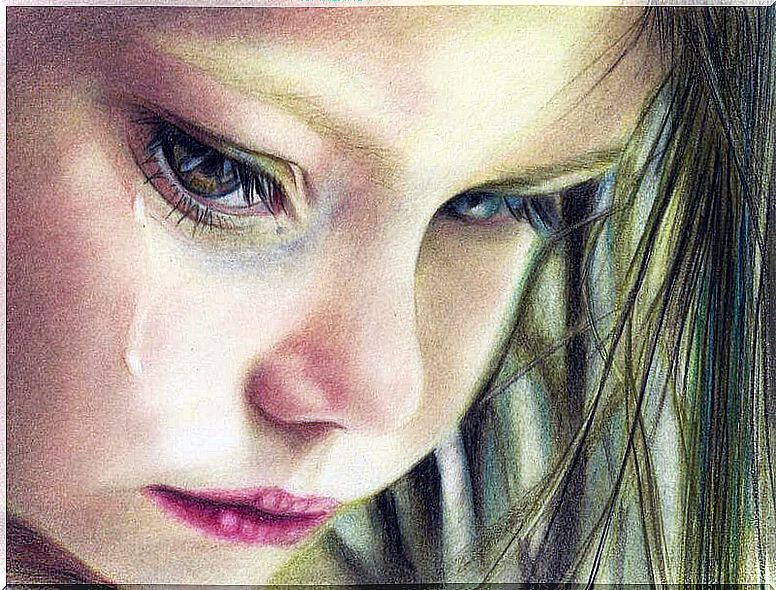
- Strengthen his or her qualities, hobbies, and interests: report him or her to a gym or club, arouse his or her interest in reading, music, theater, movies, collecting, art, or the like. Encourage him to try enriching experiences such as new flavors, sports, games…
- Train him to withstand frustration: disagree with his senseless demands, ignore his outburst of rage, teach him to wait his turn, gradually delay postponing the fulfillment of his requests, delay pleasure progressively, make him share his toys and belongings.
- Make him responsible, don’t blame: value his efforts to study, not the grades or awards he achieves. Set realistic goals and congratulate him on achieving them ( “Congratulations on your grades!” Is immensely better than “I want to see ten next time!” ).
- Shape a rational mindset: avoid stamps and absolute language ( “You’re evil. You never do this.” ); instead of making the solution easy, make him think about it for himself ( “What could we do to solve ..? And what else?” ). Talk to him, reject his illogical ideas and beliefs, and so on.
- Strengthen her sovereignty: teach her basic skills such as how to wash and dress herself, how to cook and spend money. Give him a chance to practice. Help him with everything he needs, but don’t solve his problems. Gradually let him participate in the decision-making process.
Nonetheless, if we see any of the symptoms referred to above in continuous behavior, we should consult a professional who can assess the child’s true condition. They work on the different aspects mentioned above. And this creates a light for that awesome smile that every child should show on their face and heart.
A child’s emotional health does not appear magically. It’s something you need to grow up as a parent. Therefore, we must not forget that it is easier to raise strong children than to repair broken adults.
